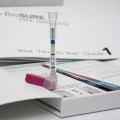DIY HIV Prevention (#DIYHIVPx)
No. I do not want to test for HIV in the “comfort of my home.” Maybe it is just me, maybe that feeling is just personal, my experience anecdotal, maybe I am just an exception, a snowflake; but it’s my choice, my voice and it is worth hearing like any other voices. After all, isn’t that how qualitative studies are done, and evidence-based public health policies made, by listening to people?
I wrote extensively on self-testing in 2013-14 when the ban on the practice was lifted, so I won’t go back to this – not much has changed since then but it seems sexual health services are taking the direction I fear they would at the time. And that’s what this post is about, the slow drift of HIV prevention towards a Do-It-Yourself service and practice.
From the start, I always found the argument of “comfort” dubious. It assumes that,
- my house if comfortable, which it is, but I wouldn’t generalise to that of everybody’s, and
- conventional testing settings and in particular GUM clinics are awful public spaces. They are not. At least not the one I have visited in London*.
“Privacy” and “discretion” are also added to “comfort”. Again, this is assuming that home testing/sampling is better when not done “in public” (it rarely takes place in public anyway) and that home settings are safer private space. But are they? HIV testing kits may come through your door in unmarked packaging but this is not a guarantee that no question will be asked at home if you have an inquisitive partner, or flatmate. As an aside, notice the language of stigma? Stay private about your sexual health, test discretely, away from the public, at home.
The extolled virtue of Home Testing done discretely in the privacy of your home is somewhat at odds with health agencies emphasis on testing and their effort to remove surrounding stigma. There was a time when testing was promoted as “testing together” which encouraged a sense of shared responsibility – but that was in the US. Forget about that, in a world of selfies, it’s all about me, and starts with me.
Home testing/sampling have a place in prevention and even though acceptable, although I am wary of acceptability studies – many trials have taught us a lessons here, this role needs to be understood and put into perspective. The approach can’t just be dropped in to the public sphere. When a recent survey shows that only 22% of potential key users understood the difference between self-testing and self-sampling it begs the question of betting on a tools without appropriate education, unless this is also part of the DIY HIV prevention strategy.
***
I accept the above does not reflect everybody’s situation and I do not make that representation. Also, there are less trivial reasons why I do not want to take an HIV test in the privacy of my comfortable house.
The main one is that I do feel better doing it in a professional setting where I will have an opportunity to interact with a professional carer, who not only will be able to support me, but who will also be able to engage with me in a dialogue about prevention and my sexual health, and vice versa.
Taking an HIV test is not just about a bit of spit on a swab or a drop of blood on a strip of paper, or even a phlebotomy. It is about engaging and being engaged holistically in HIV prevention. Testing is the entry point into the continuum of HIV prevention and care. It is an opportunity for a well-trained health professional to ask questions (even if they feel rehashed) and being able to spot whether I have other issues such as mental health, drug use, or simply a quick check on my general health. It is an opportunity to signpost other services I might need.
It is also an opportunity for me to engage with health professionals and share with them my experience of sexual health services, and of HIV prevention. An opportunity to provide feedback, an opportunity to ask where we are at with prevention and for example with PrEP (Pre-Exposure Prophylaxis), even if I know the answer. It is an opportunity to raise awareness within the medical profession that we, service users, know about new developments like PrEP; that we are asking for these and to make the point that we are getting weary of not being able to access them, hoping this message will find its way through and beyond services commissioners. This is much more than an HIV test and PrEP. This is about having a sexual health dialogue between providers and clients.
***
In the past months, I have been struggling getting an HIV test because I do not want to test at home. I have a busy schedule and a preferred walk-in clinic but failed a few times and the reasons why are more structural than personal. The first time I was turned down at my favourite walk-in clinic because it was already full and I could not be seen on that day. I arrived at 1PM, the clinic closes at 5PM. The second time, I was turned down because the clinic no longer accepted asymptomatic walk-in. A sign on the door redirected me to a website where I could order home testing kits. This was a recent change and a consequence of budget cuts. Of note the waiting time for symptomatic walk-in was 3 hours that day. The third I missed the deadline for the online booking.

Do I have something wrong? I was there to find out. Not today.
There is a real danger that DIY testing becomes a one-size-fits-all tool and that we will repeat the errors of the past (that of condom-only prevention, or abstinence-only). Home testing/sampling should not become a replacement for testing in conventional and community settings and disinvestment in this form of testing is a mistake.
This is a direct consequence of the Health and Social Care Act 2012 which devolved prevention to Local Authorities and which has been a disaster for HIV prevention. It has led to clinics closure and has slowed down the roll-out of new HIV prevention tools such as PrEP. It has allowed NHS England to lamely and wrongly argue that it was not for them to deliver or pay for HIV prevention services, whilst Local Authorities were not given the means to implement them. One outcome for those like me and their everyday busy life, is that I have not been to able to take a test I want to take for 4 months. As the number of tests taken may well be increasing in some section of the public (possibly in response to wild use of PrEP), DIY clearly does not work for all.
I for 1 agree, I had only been 2a clinic once in 27 yrs. I started PrEP & now I'm fully tested every 3 months.PrEP brought me into clinics!
— Mark_PrEP (@Mark_PrEP) June 18, 2017
With a gloomy economic forecast, GUM clinics and Local Authorities (LA) must make difficult choices, meals on wheels for the elderly, sprinklers for tower block, Sexual Health Clinics, what to prioritise?
Why bother keeping clinics open, maintaining and further developing proximity services when DIY testing is available at little if any cost for LA?
The same goes for PrEP. NHS England and Public Health England very well know that PrEP is making a difference and NHS England has legally been held responsible for its provision. Still PrEP remains unavailable and its contribution to the remarkable decrease of new HIV diagnoses in the capital in 2016 is reluctantly acknowledged by government Janissaries (doing otherwise would put pressure on the NHS to provide it).
Why bother with providing PrEP when it is DIY-available.
The approval of PrEP in Scotland and Wales is a small ray of light, but PrEP is still very much in limbo in England where it will only be accessible through the IMPACT trial which arrival we are all waiting for. Another stalling strategy.
PrEP trial is delayed; HIV support services close their doors; prevention budgets diminish. We need to get HIV back on the agenda #LetsEndIt pic.twitter.com/eqmzY37fLH
— National AIDS Trust (@NAT_AIDS_Trust) June 15, 2017
At the end of the day we all suffer from these political choices when not political games.
***
And so it goes that HIV prevention is becoming a Do-It-Yourselves business (Not all DIY tests are free). Get the latest HIV prevention information from websites not funded by the government (try to find information about PrEP on the DoH website), test at home in your self-built Ikea sofa, get advice on how to order your prevention pills online, pay for them from your own pocket – non-deductible from your NI contribution, self-prescribed without any medical supervision and then, good luck!
HIV prevention is not just about PrEP or HIV testing. It’s about a real political and social investment in prevention services. We have the tools, we have the evidences and substantial body of knowledge, we have key communities buy-in (though not all), we still have the infrastructure (maybe not for long). Only political commitment is lacking and it is becoming tiring.
Despite gloomy prospects for HIV prevention in troubled Brexit times (which will affect delivery of services), the DIY approach is showing some results, but this is not without risk or danger. Future will tell. And whilst we still can’t test ourselves out of the epidemic, and we still can treat ourselves out of the epidemic, so what can we do? Here is an answer from Peter Weatherburn at #BASSH2017, a bit dull, conventional to some extent, yet to be tried:
“I call for a resurgence in traditional HIV prevention method – educating, motivating and empowering MSM to manage sexual risk in their live to achieve the best sex with the least harm”
Of course it’s not all about MSM, and that will take more than a DIY strategy.
~rjt
*I realise that there is a world outside London, but that’s where I leave and that is where the epidemics is mostly concentrated. I understand and agree that it may be more difficult if you in remote areas to get an HIV test. That’s does not invalidate the argument. On the contrary, it vindicates normalising HIV testing in various setting like GP surgery.





